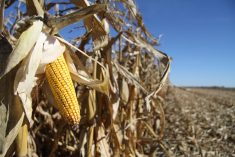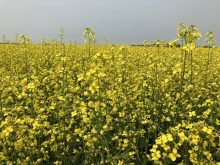Australia’s winter pulse and canola crops are off to a good start but officials caution against reading too much into early-season forecasts of increased production and exports.
The Australian Bureau of Agricultural and Resource Economics projects 1.67 million tonnes each of pulse and canola production in 2008-09, up 42 percent and 56 percent respectively from the previous year’s drought-reduced totals.
A crop report produced by the Australian Oilseeds Federation said although dry weather in May saw some producers switch to cereals, there has been strong grower support for canola due to high prices.
Read Also

Bond market seen as crop price threat
A grain market analyst believes the bond market is about to collapse and that could drive down commodity values.
Crop emergence and establishment have been good and most of the states where canola is grown, except for Western Australia, have received yield-boosting rains in recent weeks.
“It’s really a matter of seeing how the winter rainfall pattern pans out. Provided in-crop rain is average, the crop should be in reasonable shape,” said Rosemary Richards, executive director of the oilseeds federation, in an e-mail response to questions about the state of the Australian crop.
Gavin Gibson, chief executive officer of Pulse Australia, cautioned against drawing too many conclusions when the crop is barely in the ground.
“I think it is most unwise to be making firm predictions this early in the season,” he said in an e-mail.
Despite what the ABARE report said about widespread rainfall in early June, precipitation in many of the pulse growing regions of Victoria and South Australia has not met expectations, forcing growers out of chickpeas and lentils and into lower risk alternatives like wheat.
While 1.67 million tonnes would be a good rebound from last year, it is down from Pulse Australia’s April forecast of 2.03 million tonnes of production.
“Late May has been very dry for the whole of Australia and the forecast sown area has fallen. Yield potential has subsequently also fallen for many areas with only average yields now the best prospect,” said the association in its June 17 Australian pulse crop forecast.
Gibson also believes there should be a strong caveat attached to ABARE’s projection for 955,000 tonnes of pulse exports out of Australia in 2008-09, up 49 percent from last year’s levels.
That outlook is dependent on the increase in overall production, which is far from a sure thing.
“There are many examples over the last few years of an apparent great harvest being destroyed by high temperatures and strong wind right at harvest, or on the other side of the coin, devastating rainfall and flooding just as the headers are about to move into the paddocks,” he said.
Even if Australia is able to export close to one million tonnes of pulses, it won’t pose a serious threat to Canadian farmers, said Gibson. India and Pakistan are “desperately short” of all crops to meet their domestic human consumption demand.
“Some are estimating the shortfall in pulse requirements in these two countries alone to be five million tonnes or more this year,” he said.
“If that is the case, then the relatively small predicted increase in Australian production this year is not going to have any discernable impact on competing exporting countries.”
ABARE is forecasting 999,000 tonnes of Australian canola exports, up 87 percent from last year.
“That figure is about right,” said Richards.
“The crush for domestic oil demand is relatively stable but exports have been growing.”
Both grain industry officials said good winter rainfall will be the make-or-break weather event for the Australian crop.
















